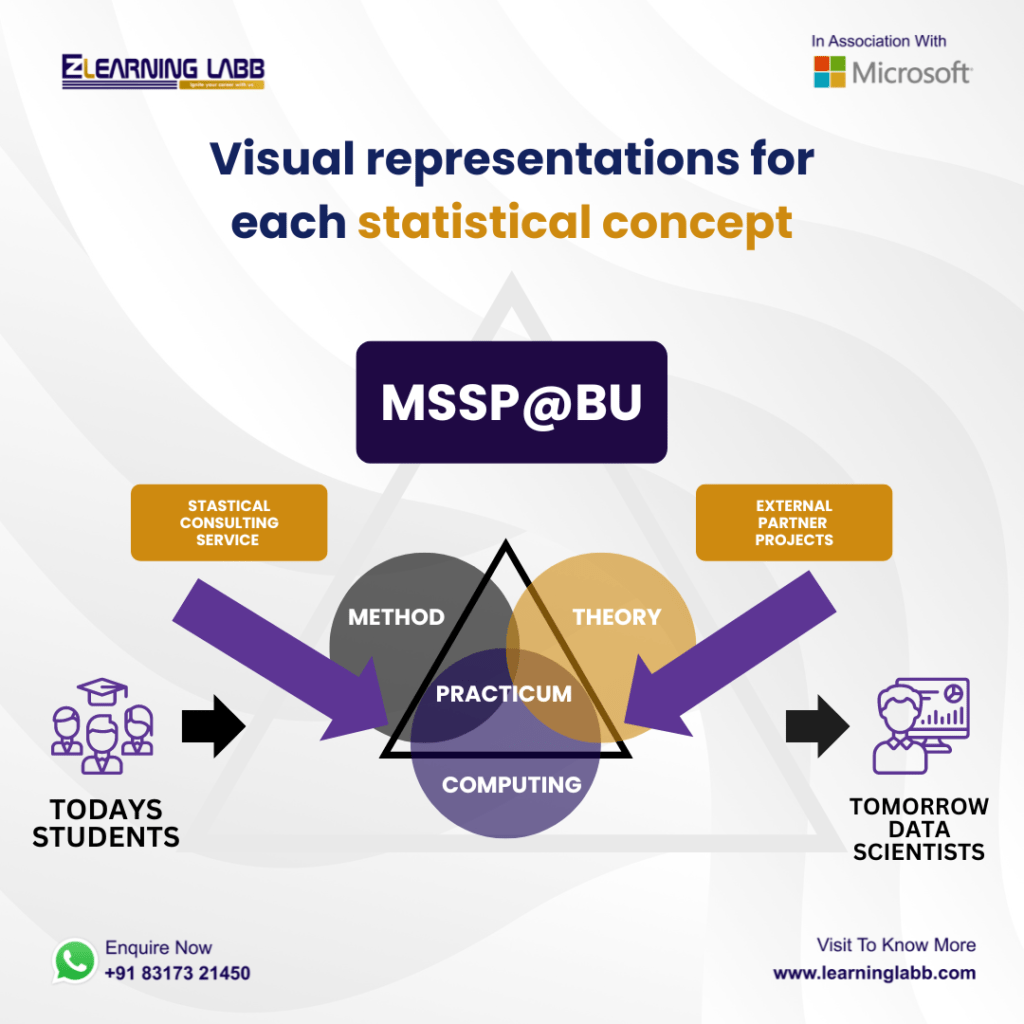In the ever-evolving landscape of data science, one discipline stands as a cornerstone of the field: statistics. Statistics is the bedrock upon which data science is built, and it plays a pivotal role in empowering data-driven decision-making. In this comprehensive guide, we’ll delve into the essential concepts that highlight the significance of statistics in data science and how it helps us make sense of the vast volumes of data at our disposal.
Why Statistics in Data Science?
Before we dive into the key concepts, let’s understand why statistics is indispensable in the world of data science. At its core, data science is all about extracting meaningful insights from data, and statistics provides the methodology and tools to achieve this.

Data Summarization:
Statistics enables us to summarise large datasets efficiently. It condenses information, making it easier to understand and communicate.
Inference: Statistics provides the foundation for making inferences about a population based on a sample. In data science, this is crucial when you can’t examine the entire dataset.
Pattern Recognition: Statistical techniques are used to identify patterns, trends, and anomalies in data, aiding in predictive modeling and decision-making.
Uncertainty Management: Data often contains uncertainty and variability. Statistics helps us quantify and manage this uncertainty, allowing for informed decisions.
Now, let’s explore some key statistical concepts that underpin data science.
1. Descriptive Statistics
Descriptive statistics are the first step in analysing data. They help us understand the basic characteristics of the dataset. The main measures of descriptive statistics include:
Measures of Central Tendency: These include the mean (average), median (middle value), and mode (most frequent value). They give us a sense of the “typical” value in a dataset.
Measures of Spread: Measures like range, variance, and standard deviation describe how the data is dispersed. A high standard deviation, for instance, indicates more variability.
Frequency Distributions: These show how often each value occurs in the dataset and help in visualising data using histograms or bar charts.
Descriptive statistics make data more digestible, providing a snapshot of its characteristics. This is particularly useful in data science when you need to understand the basic structure of your data before diving into more advanced analyses.
2. Inferential Statistics
Inferential statistics takes data analysis a step further by making predictions or inferences about a population based on a sample. Key concepts in inferential statistics include:
Hypothesis Testing: Hypothesis testing is used to determine whether an observed effect is significant or merely due to chance. It involves formulating null and alternative hypotheses, collecting data, and assessing the evidence against the null hypothesis.
Confidence Intervals: A confidence interval provides a range within which the true population parameter is likely to fall. For example, you might calculate a 95% confidence interval for the average salary of a group, which gives you a range of values within which the true average is likely to be found.
Regression Analysis: Regression models are used to understand the relationship between one or more independent variables and a dependent variable. They help in making predictions and uncovering associations within the data.
Inferential statistics is the backbone of data science when it comes to making conclusions and predictions about larger populations or datasets based on smaller samples.
3. Probability
Probability theory plays a fundamental role in data science. It deals with uncertainty and quantifies the likelihood of events occurring. Some key concepts in probability include:
Probability Distributions: These describe the possible outcomes of a random event and their associated probabilities. Common distributions include the normal distribution, binomial distribution, and Poisson distribution.
Bayesian Probability: Bayesian probability is a statistical framework that incorporates prior information and updates it with new data to make probabilistic inferences. It’s used in various data science applications, including machine learning.
Conditional Probability: Conditional probability deals with the likelihood of an event happening given that another event has occurred. It’s essential in understanding dependencies between variables.
Probability theory is crucial for making predictions, modeling uncertainty, and creating probabilistic models, such as those used in machine learning algorithms.
4. Sampling
In data science, it’s often impractical to analyze an entire dataset, especially when dealing with big data. Sampling is the process of selecting a subset (sample) from a larger dataset (population) for analysis. Key concepts in sampling include:
Random Sampling: To ensure that a sample is representative of the population, random sampling techniques are used. Simple random sampling, stratified sampling, and cluster sampling are some methods employed.
Sampling Error: Sampling introduces error into the estimates. Understanding and quantifying this error is essential for accurate inference.
Bootstrapping: Bootstrapping is a resampling technique that generates multiple samples from the original data. It’s often used for estimating sampling variability and constructing confidence intervals.
Sampling is a critical aspect of data science, as it allows us to work with manageable subsets of data while still making valid inferences about the entire population.
5. Data Visualization
While not a traditional statistical concept, data visualization is closely intertwined with statistics in data science. Visualisations like histograms, scatter plots, and box plots help us explore and communicate data effectively. Some important points about data visualization include:
Exploratory Data Analysis (EDA): EDA involves creating visualisations to gain a better understanding of the data. It often leads to insights and hypotheses about the data’s behaviour.
Communicating Results: Effective data visualizations help in presenting findings to non-technical stakeholders. They make complex data more accessible and comprehensible.
Data visualization is a bridge between statistics and effective communication. It turns abstract numbers into insightful stories that can inform decision-making.
6. Bayesian Inference
Bayesian inference is a powerful statistical framework that has gained prominence in data science. It’s rooted in Bayes’ theorem and provides a way to update beliefs or probabilities about an event based on new evidence. Key points about Bayesian inference include:
Prior and Posterior Probability: Bayesian inference incorporates prior beliefs (prior probability) and updates them with observed data to calculate the posterior probability. This approach is invaluable in scenarios where historical information is available.
Bayesian Networks: Bayesian networks are graphical models that represent the probabilistic relationships between variables. They are used in various data science applications, including decision support systems and risk analysis.
Bayesian inference offers a flexible and intuitive way to handle uncertainty, which is prevalent in many real-world data science problems.
7. Hypothesis Testing and A/B Testing
Hypothesis testing is a core concept in statistics, and it’s widely used in data science for making data-driven decisions. A/B testing, a specific form of hypothesis testing, is particularly crucial in business and marketing. Key aspects of hypothesis testing and A/B testing include:
Null and Alternative Hypotheses: Formulating a null hypothesis that represents the status quo and an alternative hypothesis that represents a proposed change.
Significance Levels and P-Values: Significance levels (often denoted as alpha) determine the threshold for considering results statistically significant. P-values quantify the strength of evidence against the null hypothesis.
Experimental Design: Properly designing experiments, such as A/B tests, is essential to ensure that the results are meaningful and reliable.
Hypothesis testing and A/B testing are powerful tools for assessing the impact






